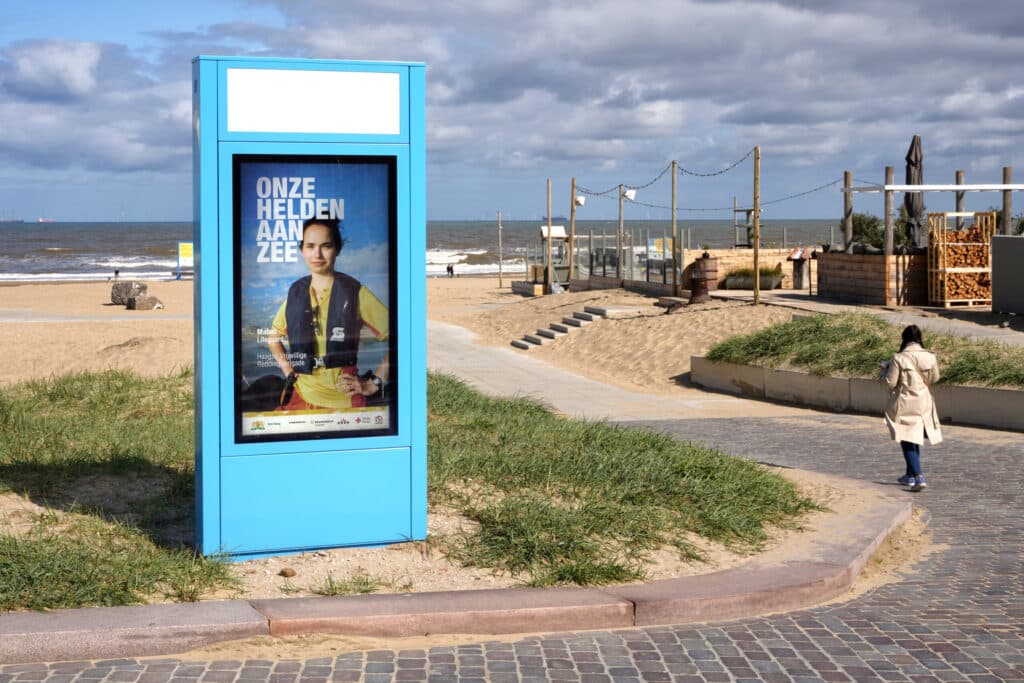Along the Dutch coast, information boards are placed at every beach entrance to inform visitors about safety on the beach and in the sea. However, these boards are often overlooked. They are static and not easily accessible for people with visual impairments, low literacy, or those in wheelchairs.In Scheveningen, during the summer of 2020, it became clear that many beach visitors were unfamiliar with the meaning of the safety flags displayed on the swimming water boards.This use case explores how the Municipality of The Hague can inform beach visitors about safety in a more dynamic and engaging way, potentially by using real-time data sources available within the Living Lab Scheveningen.

In the summer of 2020, Scheveningen was the busiest seaside resort in the Netherlands, attracting many national and international visitors. The coastline is The Hague’s largest tourist attraction, and on warm summer days, thousands of people head to the sea to cool off.
However, swimming in the sea comes with certain risks, such as tides, rip currents, wind direction, and water quality. This became painfully clear during the busiest weekend of August 2020, when national lifeguard teams had to respond more than 300 times in a single day, including 33 life-threatening incidents. This shows that many visitors are still insufficiently aware of the dangers associated with swimming in the sea.
In June 2021, a dynamic information board was installed on the Scheveningen North Boulevard to better inform visitors about swimming water quality. The board complements the existing signage and displays real-time, audience-focused messages, increasing visibility and raising awareness of beach and water safety.
If the pilot proves successful, the system can be expanded to other parts of the Scheveningen coastline, such as the Central Boulevard, the Zwarte Pad, and the Northern Harbour Head.
The Province of South Holland is responsible for all information boards along the coastline and therefore acts as the client for the dynamic information board. In addition to the Province of South Holland, the municipality collaborates with the Environmental Service Midden-Holland (ODMH), the Rescue Brigade, the Royal Netherlands Sea Rescue Institution (KNRM), and the Scheveningen district office.
Interested in more information about this use case? Please contact the use case contact person, Suzanne Kalf (suzanne.kalf@denhaag.nl) or send a general inquiry to the Living Lab Scheveningen via email at smartthehague@denhaag.nl.